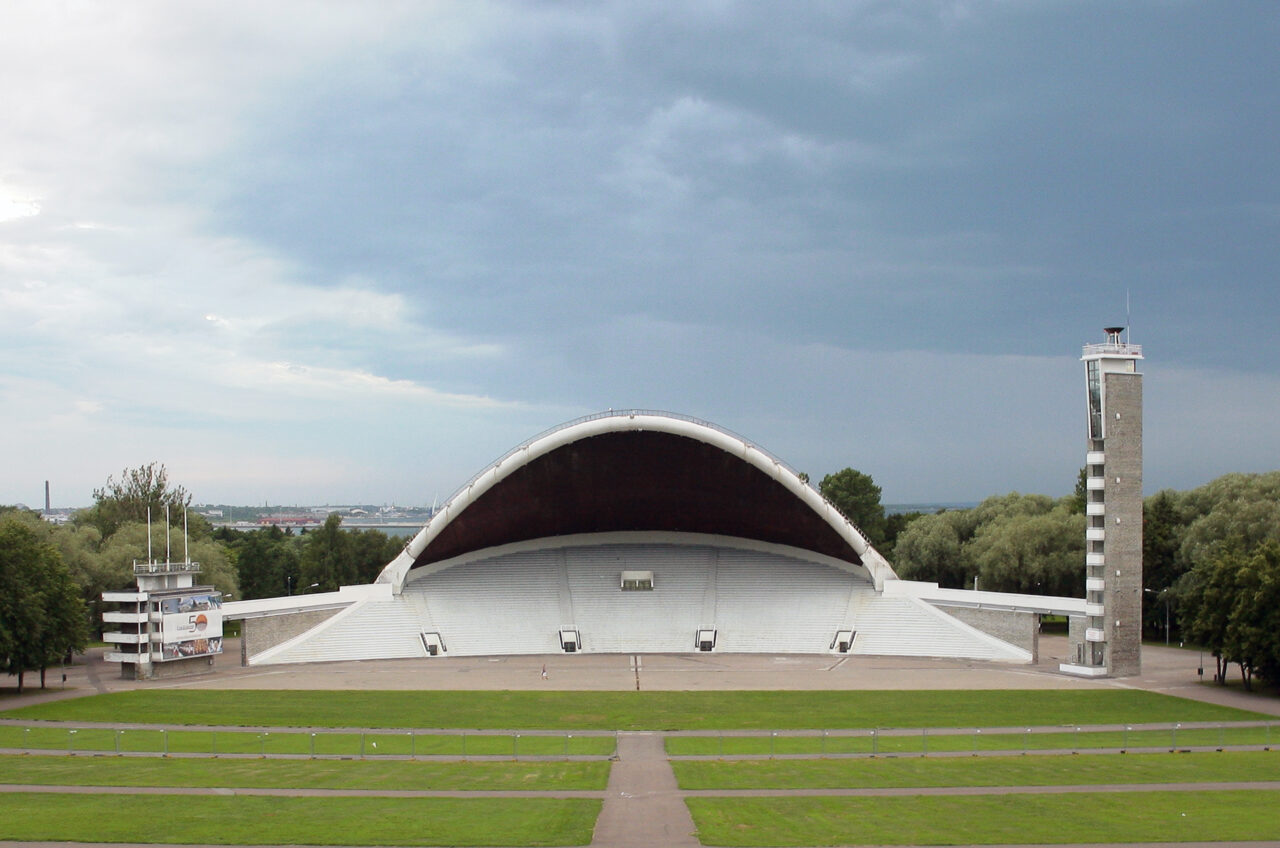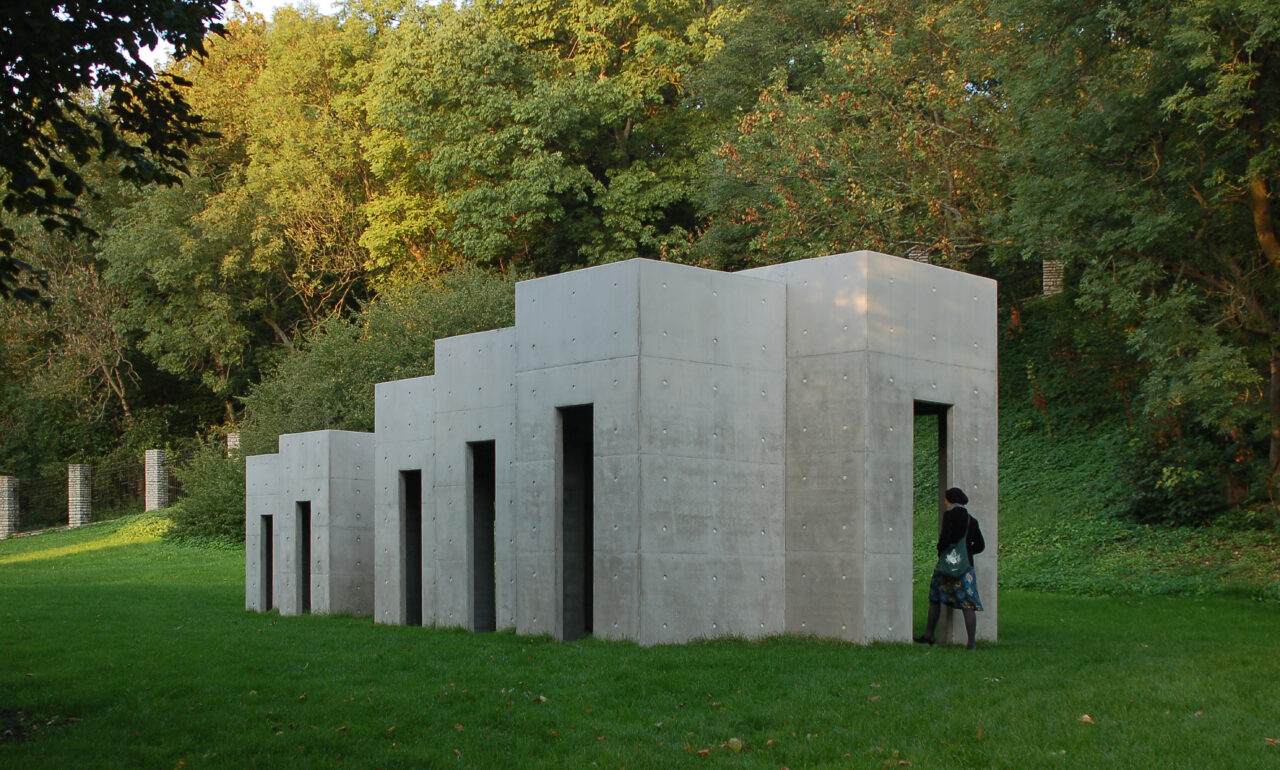Tallinn Song Festival Grounds
Architect
Location
Narva road 95, Tallinn, Estonia
Size
3 753,2 m2
Status
Completed in1960
Photo
Martin Siplane
Typology
Tags

The song festival stage is one of the most unique architectural objects of the Soviet era, both for its innovative engineering architecture and its cultural content. It is also one of the first post-war modernist buildings in Estonia.
Song festivals had an important role in Estonia’s national awakening at the end of the 19th century and the event has remained a living tradition up to today, with tens of thousands of participants from all over the country gathering every four years. This stage has carried symbolic national significance through the Soviet years.
The design of the song festival stage is based on a concrete shell in hyperbolic parabolic shape with a raised cantilevered arc holding it up. Up to 20,000 singers can fit beneath it on the 50 arching steps. The part beneath the steps accommodates exhibition spaces and auxiliary rooms. At its two sides are a light tower and a media building, while a large, landscaped area surrounds it. In front of the stage there is an ellipsis shaped area (220 × 175 meters) for the spectators. This design is based on the winning entry for the competition held in 1958.
The entire complex itself is around 30 hectares in size and in addition to the stage structure there are several auxiliary structures similar in their design. In the surrounding park there is also an installation Cromatico by a German architect Lukas Kühne (2011) – a structure with rooms where echoes sound like different musical notes.

